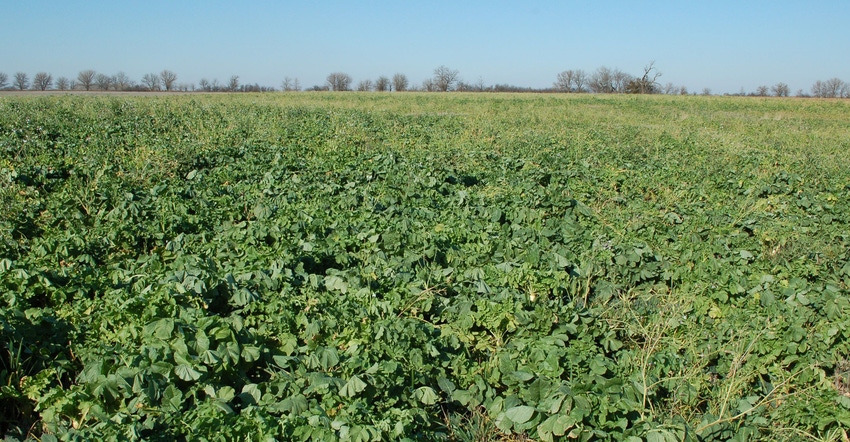
In the Midwest, many producers are limited in cover crop use due to the relatively short growing season after the primary crop is harvested. When wheat, seed corn or sweet corn is grown in a rotation, planting cover crops after harvest could sometimes provide a longer season potential; however, where grain corn and soybeans are the predominant cash crops, their relatively long growing seasons leave a short window for cover crop establishment and biomass production. Increasing biomass is critical for cover crop effectiveness; planting time, weather conditions, length of the growing season and cover crop species are the most important factors to consider.
A University of Nebraska-Lincoln study was conducted during the 2015 and 2016 growing seasons under both rain-fed (at the Havelock Farm near Lincoln) and irrigated (at the South Central Agricultural Laboratory near Clay Center) conditions in Nebraska. The treatments consisted of four cover crop planting dates into corn (hand broadcast) and four single-species cover crops (rye, radish, hairy vetch and soybean) and a three-species mixture, representing the most commonly used in the region. Growth, development, leaf chlorophyll, plant height, stem diameter and yield were measured for corn. Cover crop biomass was measured in summer, fall and the following spring; and soil temperature and soil water content were monitored. Plant population, plant height and yield were examined for the subsequent rotation (soybean).
Common questions
And the results of the study were able to answer key questions:
Is corn affected by interseeding cover crops? All corn measurements were affected when cover crops were planted at the same time as the corn, but no detrimental effects were found on corn when cover crops were planted at or after corn canopy closure (V8 corn stage, Figure 1) Rye seeded at corn planting negatively affected corn the most, followed by the mixture and radish. Soil temperature and water content were not affected by cover crop treatments.
How are cover crops impacted by planting date? Maximum cover crop biomass was produced during summer followed by spring while fall biomass was greatly reduced. Cover crops planted at the R6 corn stage (at physiological maturity) produced higher spring biomass than cover crops planted at V8, R5 or after corn harvest (Figure 2). Rye and the mixture produced the greatest biomass during both summer and spring; radish only produced measurable biomass during the summer since it did not overwinter.
How is the subsequent rotation (soybean) affected? The first year of the soybean rotation is going to be harvested during fall 2016. Initial data suggests differences in soybean plant population due to treatments.
Elmore is an Extension Cropping Systems agronomist and Bastidas is an agronomy doctoral student at the University of Nebraska-Lincoln. This article was compiled from one of several briefs on cover crop research featured in CropWatch.
About the Author(s)
You May Also Like




